What Animals Were In The Great Zimbabwe
Below you lot can find a consummate list of Zimbabwean animals. We currently track 231 animals in Zimbabwe and are adding more every day!
The list of animals in Republic of zimbabwe is extensive, including cannibal creatures like the African Wild Dog, lion, and Wildebeest, and herbivores like the elephant and giraffe. Zimbabwe is host to over 350 species of mammals, over 500 bird species, and 131 species of fish.
The Official National Animate being of Zimbabwe
The Sable Antelope is the national fauna of Zimbabwe. Antelopes are amid some of the almost populous species in Zimbabwe.
This species enjoys keen popularity with photographers, only the horns that brand them stand out accept besides made them a target for bays hunters. Some estimates place the number of Sable Antelope in the wild as low equally i,000, with condign extinct a distinct possibility with conservation efforts.
Zimbabwe is one of xl countries to accept one national animal, with other countries including Republic of angola, Republic of botswana, and Kingdom of morocco.
Where To Detect The Top Wild animals in Zimbabwe
There is a diverse range of wildlife found throughout Zimbabwe. Here are some of the places where you can see the near famous wildlife in Zimbabwe:
- Elephant – The elephant is piece of cake to discover in the savanna areas, virtually unremarkably about rivers.
- Antelope – Antelopes alive in the open up savanna areas of Republic of zimbabwe.
- Cheetah – The cheetah is near mutual in open grassland areas, with casualty availability playing one of the biggest roles in their overall distribution.
- Giraffe – Giraffes feed in areas with access to trees that have been largely left untouched past species living closer to the ground.
- Impala – The Impala is 1 of the most popular species found in Zimbabwe's grassland areas, famous for its high leaps.
- Panthera leo – Lions lived in grassland areas where they can easily follow herds of casualty animals.
The Nigh Dangerous Animals In Zimbabwe Today
While there are many non-threatening species to bask in Republic of zimbabwe today, there are too several dangerous species present in this country. Zimbabwe's most dangerous species include:
- Buffalo – Buffalo in Zimbabwe has no natural predators, largely owing to their size and aggressive temperament. These animals can likewise achieve maximum speeds of 35 miles per 60 minutes, allowing them to outrun predators easily.
- Crocodiles – Crocodiles are apex predators very skilled at hunting in their aquatic environment, making them a threat to boaters. These reptiles tin can likewise hunt effectively on country, especially after dark.
- Elephants – Because of their big size and dangerous tusks, elephants can easily trample or gore people when feeling threatened. Males, chosen bulls, may she more aggression during mating flavor.
- Hippos – The hippopotamus is 1 of the nigh hazardous species because of how aggressively males defend their territory. These animals have tusks in their mouths measuring one-half a meter long that they will use confronting intruders
- Lions – Lions take lost much of their natural habitat to homo intervention, including popular hunting areas. A subtract in natural hunting areas increases the odds of encounters between humans and lions, often with mortiferous consequences.
Endangered Animals In Zimbabwe
Unfortunately, some of the species in Zimbabwe that are of the nigh interest to people are endangered. Habitat loss, climate alter, and bays hunting are common threats to animals in Zimbabwe. Some of this nation'due south most notable endangered species include:
- African Wild Dog
- Blackness Rhinoceros
- Lion
Zimbabwean Animals

Aardvark
Can motility 2ft of soil in just 15 seconds!

Aardwolf
The aardwolf has five toes on its forepart paws

African Bullfrog
The African bullfrog is ane of only three species of frog that have "teeth."



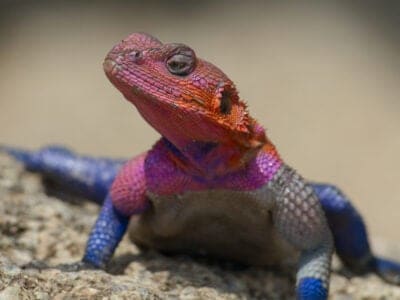
Agama Cadger
The agama forms minor social groups that incorporate both ascendant and subordinate males.
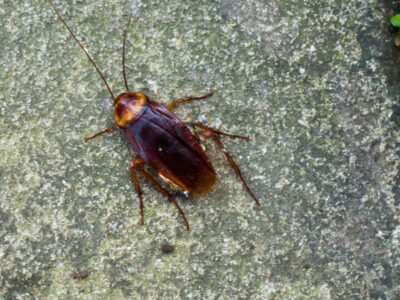

Ant
Kickoff evolved 100 million years ago!


Armyworm
They are so named because they "march" in armies of worms from one crop to another in search of nutrient
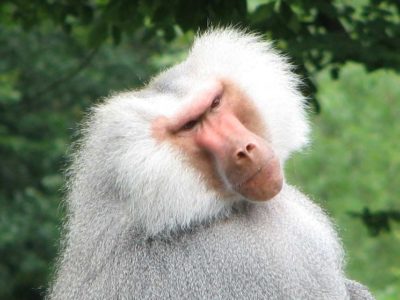
Baboon
Can travel more than 4 miles a twenty-four hour period!

Assistant Spider
People spin clothing and fishing nets out of these spiders' silk.

Affront
There are over 1768 known species!

Barn Owl
Found everywhere effectually the globe!


Bat
Detects casualty using echolocation!


Bee
Rock paintings of bees date back fifteen,000 years

Beetle
At that place are more than than 350,000 different species

Bichir
The bichir species is more than 400 meg years one-time

Bird
Not all birds are able to fly!

Biscuit Beetle
The biscuit beetle form a symbiotic human relationship with yeast
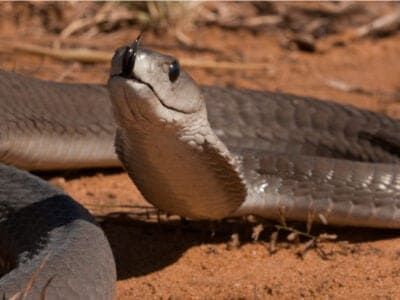
Black Mamba
Blackness mambas are the longest venomous ophidian in Africa, and second longest in the world.
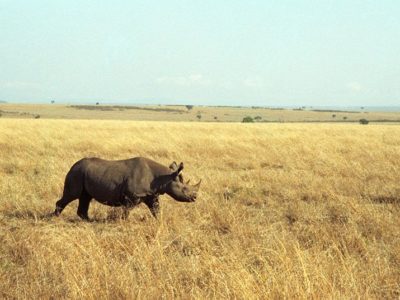

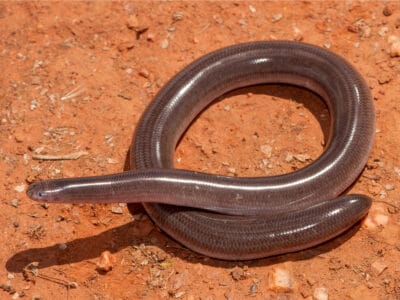
Bullheaded Serpent
The blind snake is oft mistaken for a worm.
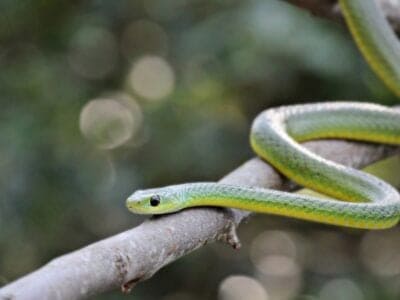
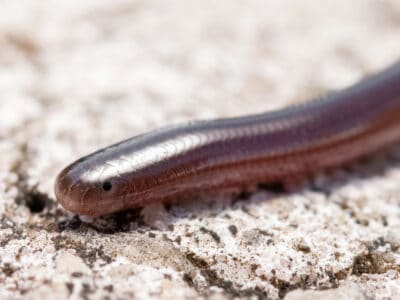
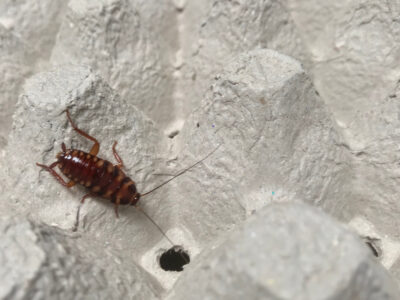

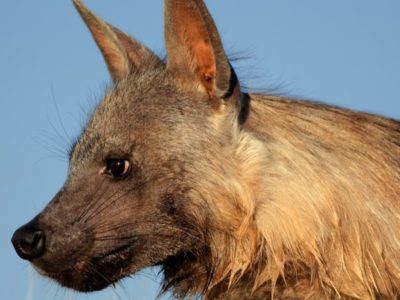

Buffalo
Has no real natural predators!


Bush Baby
In a series of leaps, this creature can cover nearly 30 feet of distance in but a few seconds.

Butterfly
There are thought to exist up 17,500 species!

Caecilian
Some species' babies employ their hooked or scraper-similar teeth to pare off and eat their mother's skin

Caracal
Has twenty unlike muscles in information technology's ears!

Carpenter Ant
Carpenter ants tin lift upward to seven times their own weight with their teeth!

True cat
First domesticated by the Ancient Egyptians!


Catfish
In that location are nearly three,000 unlike species!

Centipede
There are about iii,000 documented species!
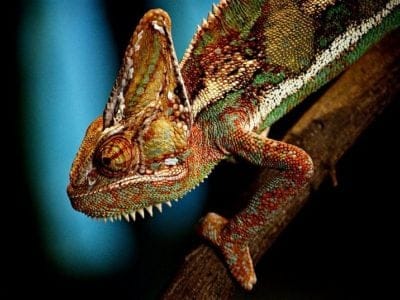
Chameleon
There are more than 160 dissimilar species!
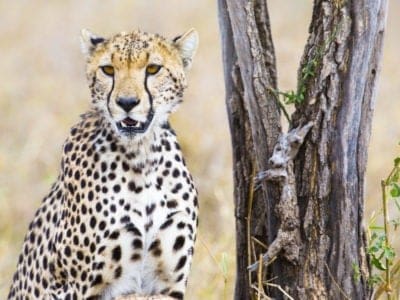
Cheetah
The fastest land mammal in the world!

Chicken
First domesticated more than ten,000 years agone!
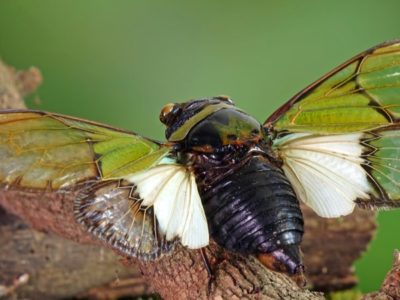
Cicada
Cicadas have one of the longest insect lifespans
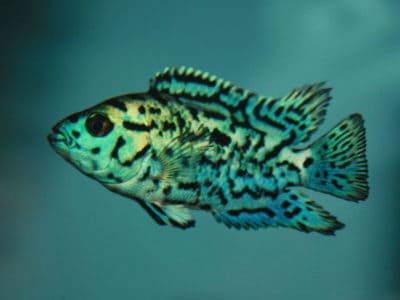
Cichlid
In that location are more than than ii 000 known species!

Cockroach
Dated to be effectually 300 1000000 years erstwhile!

Codling Moth
Pupae are able to undergo diapause to survive poor fruit yield years and wintertime.




Moo-cow
There are well-nigh 1.v million worldwide!

Crab
There are 93 unlike crab groups

Crab Spider
Crab Spiders can mimic ants or bird debris

Crane
Many are critically endangered species!

Cricket
Male crickets can produce sounds past rubbing their wings together

Crocodile
Have changed little in 200 meg years!

Crow
A group of these birds is called a Murder.

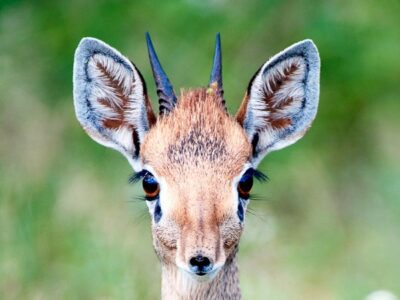
Dik-Dik
A dik-dik is named after a sound information technology makes when information technology is frightened

Dog
First domesticated in South-East Asia!

Dog Tick
Dog ticks feed on dogs and other mammals

Donkey
Commencement domesticated 5,000 years agone!



Duck
Rows of tiny plates line their teeth!

Dung Beetle
The dung beetle tin can push objects many times its ain weight

Hawkeye
Has exceptional eyesight!

Earthworm
They are hermaphrodites, which means they have male and female person organs

Earwig
There are nearly ii,000 different species!
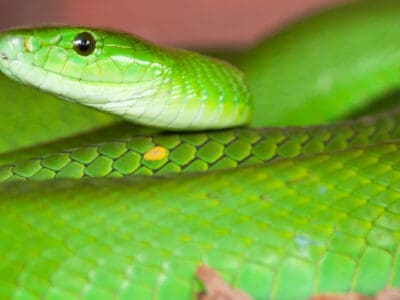
Eastern Green Mamba
Information technology is completely arboreal, and its green color is one of the adaptations that make life in the trees possible.

Eel
Eels tin can be a mere few inches long to 13 feet!
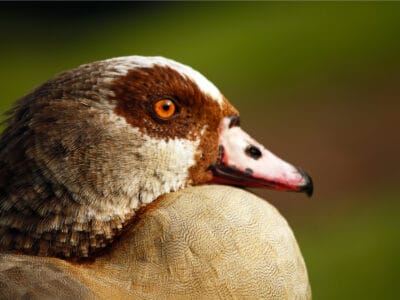
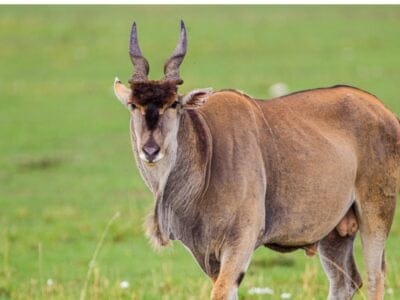
Eland
Both females and males have horns.
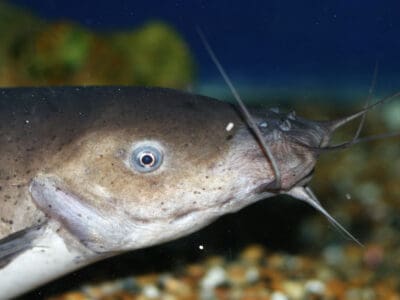
Electric Catfish
The electric catfish can belch an electric stupor upwards to 450 volts

Elephant
Spends around 22 hours a day eating!


Falcon
The fastest creatures on the planet!

False Widow Spider
False spiders actually prey on black widow spiders and other hazardous spiders

Firefly
The firefly produces some of the most efficient light in the world
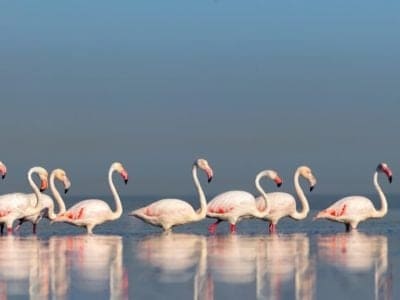
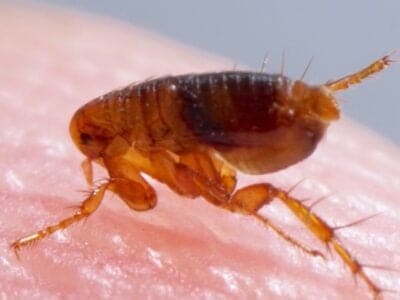
Flea
Adult fleas can jump up to 7 inches in the air

Fly
At that place are more than than 240,000 different species!

Fox
There are 12 different species in the world!

Frog
At that place are around seven,000 dissimilar species!
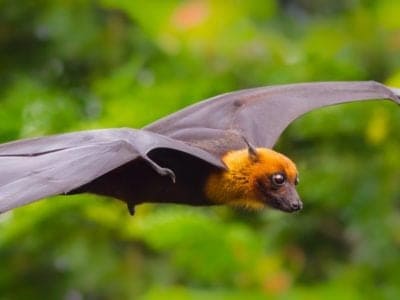

Fruit Wing
Fruit flies are amid the most common inquiry animals in the earth
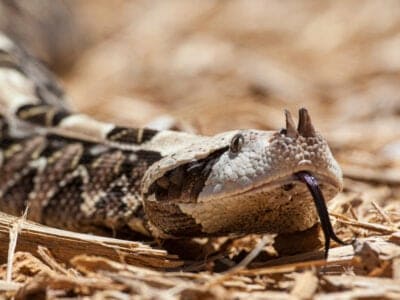

Gazelle
Named for the Arabic word for love poems

Gecko
In that location are thought to exist over 2,000 species!

Gerbil
Originally known as the Desert Rat!

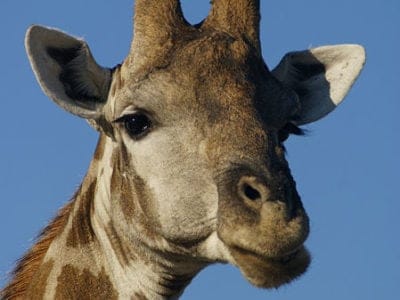
Giraffe
Long, black tongue tin grow to xviii inches long!


Glow Worm
Plant inhabiting dense woodland and caves!

Gnat
Males class big mating swarms at dusk

Goat
About closely related to the Sheep!



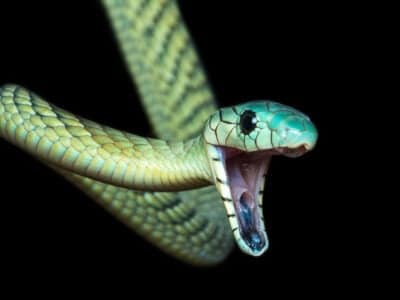
Dark-green Mamba
Green mambas are fast, and tin can travel up to 7 miles per hour.
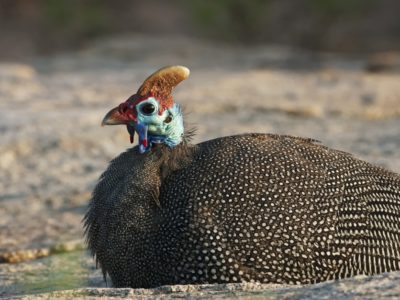

Hamster
Able to run equally speedily backwards as forwards!

Hare
Can accomplish speeds of over 40 mph!

Hawk Moth Caterpillar
Many hawk moth caterpillars eat toxins from plants, but don't sequester them the way milkweed collywobbles do. Nearly toxins are excreted.

Hedgehog
Idea to be one of the oldest mammals on Earth!

Heron
Inhabits wetlands around the world!
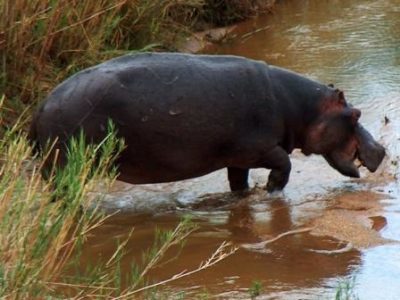
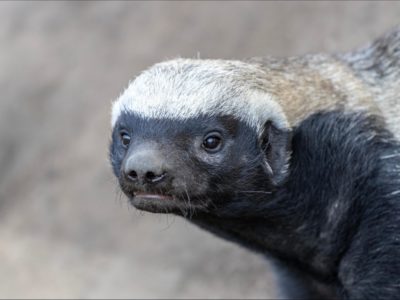

Honey Bee
There are merely 8 recognized species!

Hoopoe
Stunning bird with a stinky way to deter predators!

Horned Adder
Males tend to exist more brightly colored than females, and females are significantly bigger than males.

Horse
Has evolved over 50 million years!

Horsefly
Horseflies have been seen performing Immelmann turns, much similar fighter jets.


Homo
Thought to have orignated 200,000 years ago!

Huntsman Spider
Some huntsman spiders have an interesting manner of moving effectually. Some cartwheel while others exercise handsprings or backflips.
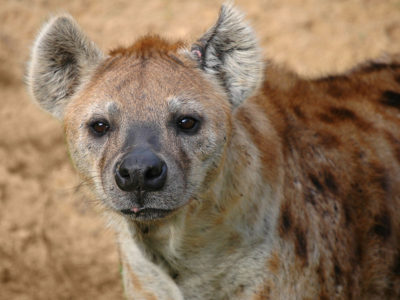
Hyena
There are 4 different species!

Ibis
Establish in swamps, marshes and wetlands!

Impala
Able to jump over 10 feet high

Insects
There are an estimated 30 million species!

Jacana
The jacana has the ability to swim underwater
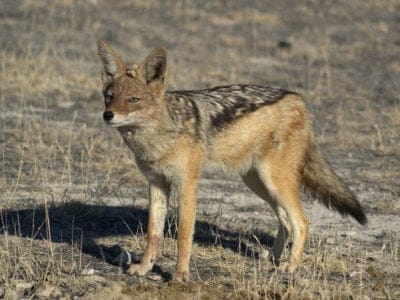
Jackal
Can maintain speeds of 16 km/h!


Kingfisher
Inhabits wetlands and woodlands worldwide!
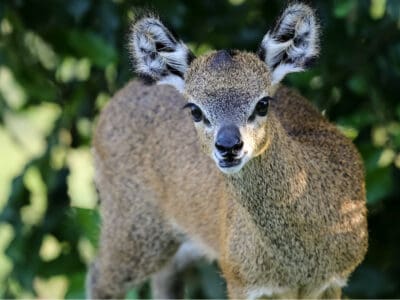
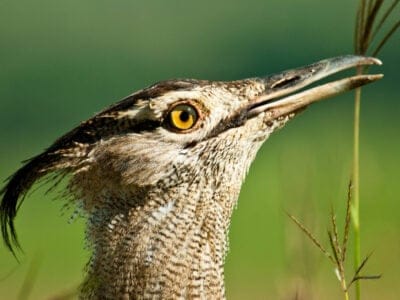
Kori Bustard
Information technology'south easily identified by its crest, large size, and wingspan
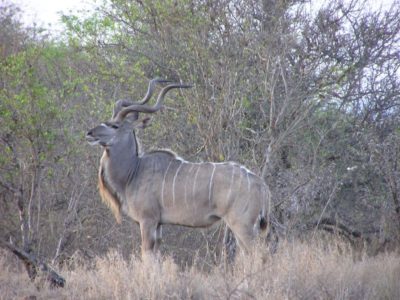
Kudu
Lives in herds of up to 24 individuals!

Ladybug
There are more than than 5,000 species worldwide!

Lappet-faced Vulture
Lappet-faced vultures are tidy and launder their heads in a torso of water after they've eaten

Leech
Has 10 pairs of eyes!
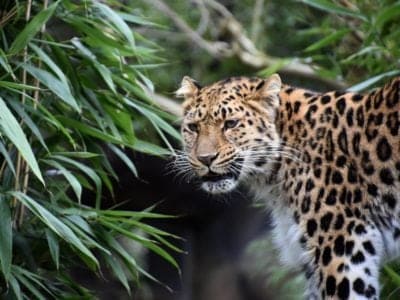
Leopard
Spends much of the time high in the trees!


Liger
The offspring of a lion and tiger parents!
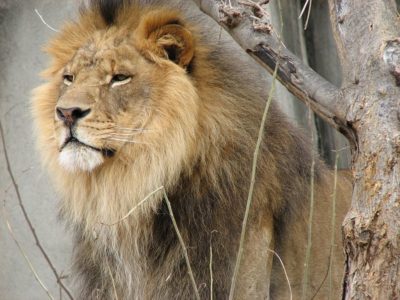
Lion
Lives in modest groups called prides!

Lizard
At that place are around v,000 unlike species!

Locust
Each locust tin can eat its weight in plants each day.

Maggot
Will only live in moisture areas

Magpie
They are plant beyond Europe, Asia and Africa!
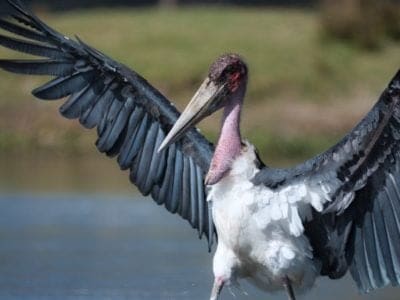

Mayfly
At that place are 2,500 known species worldwide!

Mealybug
They have a symbiotic relationship with ants.


Mole
Primarily hunts and feeds on Earthworms!
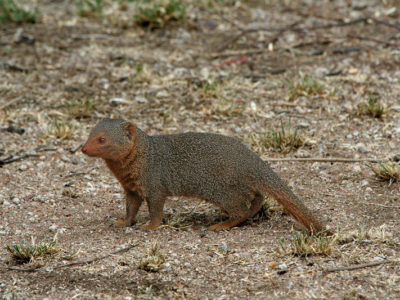
Mongoose
Range in size from merely one to 3 foot!

Mongrel
Has characteristics of 2 or more than breeds!


Monkey
There are effectually 260 known species!

Moorhen
Feeds on aquatic insects and water-spiders!

Mosquito
Simply the female person mosquito really sucks blood

Moth
There are 250,000 different species!

Mouse
Found on every continent on World!
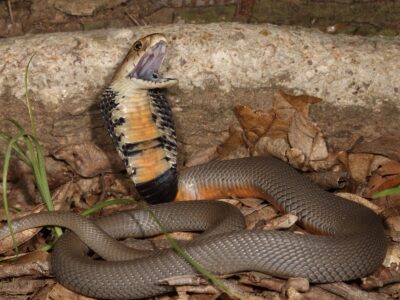

Mule
The offspring of a equus caballus and donkey parents!

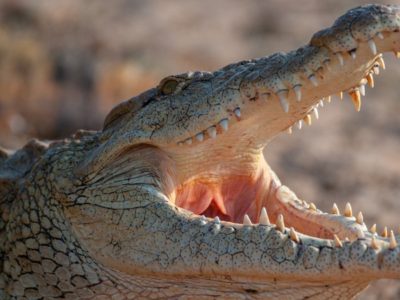
Nile Crocodile
When a female person Nile crocodile'due south hatchlings are in danger, she may hide them in a special pouch inside her throat.


Nyala
They have a high-pitched alarm phone call that sounds like a barking dog.

Olive Baboon
Olive baboons will sometimes form strong friendships with each other

Orb Weaver
Females are nearly four times the size of males

Otter
There are xiii different species worldwide

Owl
The owl can rotate its head some 270 degrees
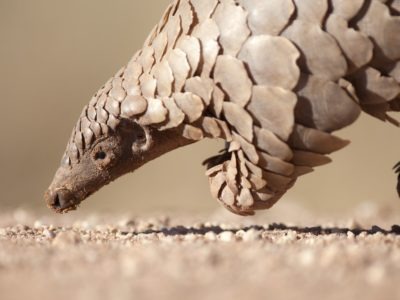
Pangolin
Bad eyesight, but bully sense of scent

Parrot
Can live for upwards to 100 years!


Pheasant
Females lay betwixt 8 and 12 eggs per clutch!

Dove
They tin detect their way back to their nests from upwards to 1300 miles away.

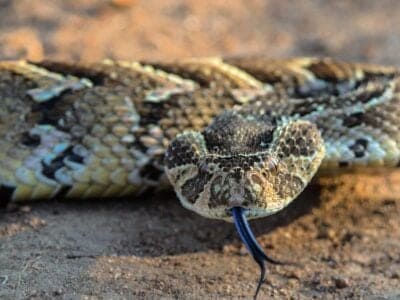
Puff Adder
This large ophidian is so-named because it will puff up its torso to appear bigger than it is when directly threatened by a predator or person.

Quail
Inhabits woodland and wood areas worldwide!

Rabbit
There are more than 50 unlike species!

Rat
Omnivores that eat anything!
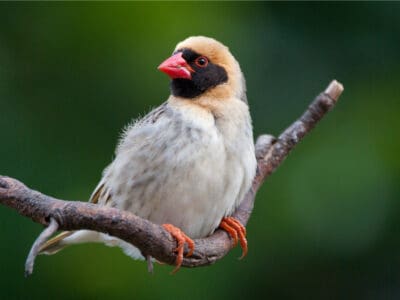



Robin
There are more than 45 species in Australia alone!
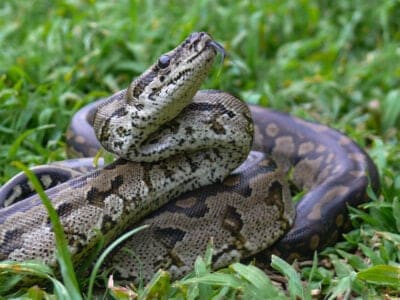

Rodents
The capybara, the globe's largest rodent, likes to exist in and around bodies of h2o. Because of this, the Catholic Church in South America decided that it was a fish, and people were allowed to swallow information technology during Lent and First Fridays.

Rooster
Will mate with the entire flock!

Sable Ferret
Ferrets were used during the Revolutionary State of war to keep downward the rat population.

Scorpion
In that location are around two,000 known species!

Sea Hawkeye
The body of water eagle tends to mate for life with a unmarried partner

Seahorse
Males requite nascence to upwardly to 1,000 offspring!

Serval
Can leap more 1 meter into the air!

Sheep
Effectually 35 one thousand thousand in the English language countryside!

Shrew
The spinal column of the shrew Scutisorex somereni is and so strong and reinforced that it can back up the weight of an developed human.

Shrimp
There are ii,000 different species worldwide!

Skink Cadger
Some skinks lay eggs in some habitats while giving birth to skinklets in other habitats.

Slug
They glide around on i foot, which is aided by the slime they produce


Snail
There are nearly 1,000 dissimilar species!

Ophidian
There are around 3,000 known species worldwide

Snouted Cobra
The snouted cobra, also known equally the banded snouted cobra, is ane of the most venomous snakes in all of Africa.

Sparrow
There are 140 unlike species!

Spider Wasp
They prey on spiders to feed their larvae or they parasitize other spider wasps.
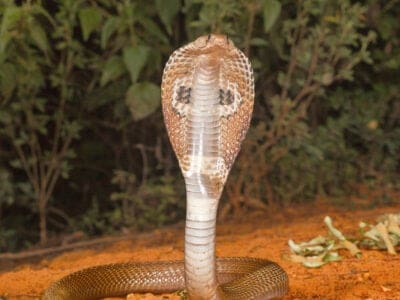
Spitting Cobra
Spitting cobras are types of cobras that can spit venom at predators and prey.

Squirrel
Small rodents found in woodlands worldwide!

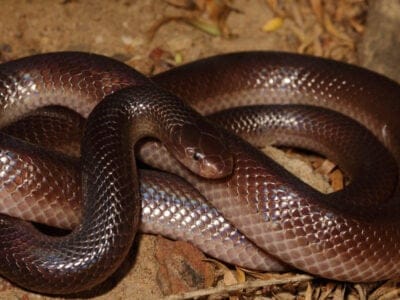
Stiletto Snake
Considering of their unique venom delivery system, stiletto snakes are almost impossible to hold safely in the usual way (with fingers behind the head) without being bitten.

Stork
They can't sing like other birds.

Swan
Populations have been affected by pollution!

Tarantula Hawk
Tarantula hawks are excellent pollinators, specially for milkweed.

Termite
Their mounds tin exist up to 9 meters tall!

Thrush
The American robin is chosen the robin because its cherry breast reminded European settlers of the robin back in the erstwhile country.

Tick
They inject hosts with a chemic that stops them from feeling the pain of the seize with teeth

Tiger Protrude
The developed tiger protrude is ane of the fastest land insects in the world

Tortoise
Can alive until they are more than than 150 years old!

Tree Frog
Establish in warmer jungles and forests!
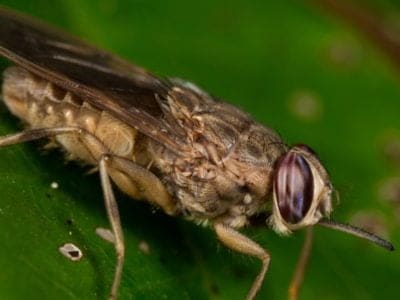
Tsetse Fly
Tsetse flies are big bitter flies that live in the tropical regions of Africa.

Turtles
Some species of aquatic turtles can get up to lxx percent of their oxygen through their butt.

Twig Snake
Twig snakes are among the few rear-fanged colubrids whose seize with teeth is highly venomous and potentially fatal.

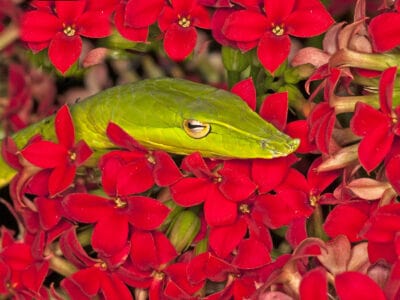
Vine Snake
A slender body and elongated snout give the vine ophidian a regal await.

Vinegaroon
Vinegaroons can spray 19 times before the glands are depleted

Vulture
At that place are 30 dissimilar species worldwide!
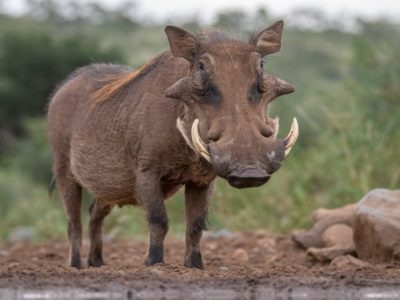
Warthog
Has ii sets of tusks on it's face up!

Wasp
In that location are around 75,000 recognised species!


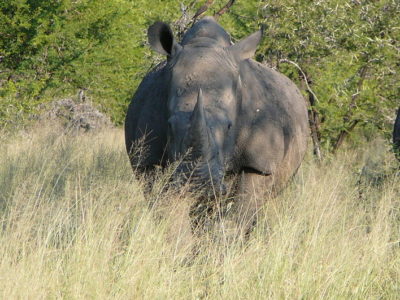
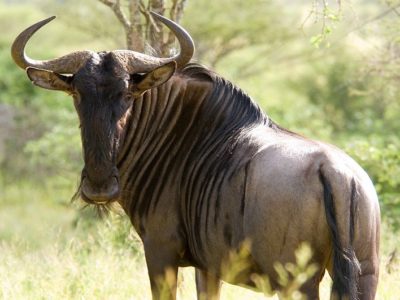
Wildebeest
Can expedition more than 1,000 miles every year!




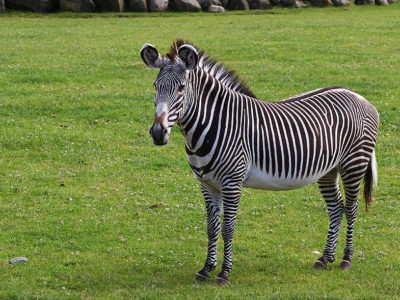
Zebra
Stripe patterns are unique to each individual!
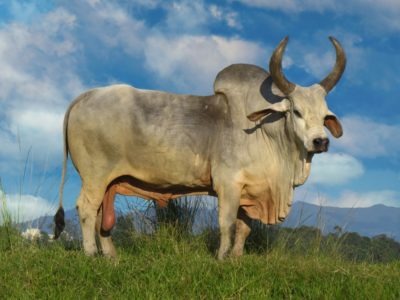
Zebu
There are around 75 different species!
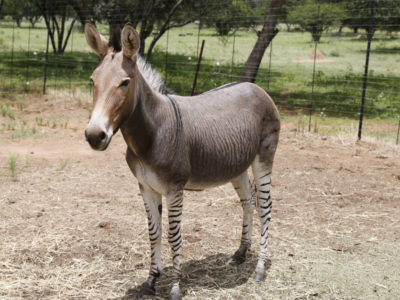
Zonkey
The offspring of Zebra and Ass parents!
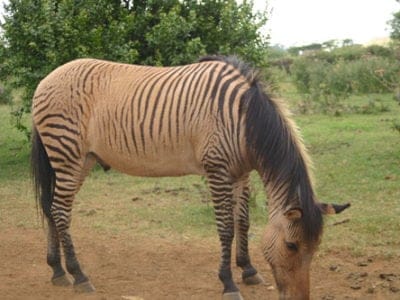
Zorse
The offspring of a Zebra and Horse parents!
Zimbabwean Animals List
- Aardvark
- Aardwolf
- African Bullfrog
- African Bush Elephant
- African Clawed Frog
- African Wild Domestic dog
- Agama Cadger
- American Cockroach
- Ant
- Antelope
- Armyworm
- Birdie
- Banana Spider
- Barb
- Befouled Owl
- Barn Eat
- Bat
- Bed Bugs
- Bee
- Beetle
- Bichir
- Bird
- Beige Beetle
- Blackness Mamba
- Black Rhinoceros
- Black Widow Spider
- Bullheaded Snake
- Boomslang
- Brahminy Blindsnake
- Brown-banded Cockroach
- Brown Dog Tick
- Dark-brown Hyena
- Buffalo
- Bumblebee
- Bush Baby
- Butterfly
- Caecilian
- Caracal
- Carpenter Emmet
- Cat
- Caterpillar
- Catfish
- Centipede
- Chameleon
- Chetah
- Craven
- Cicada
- Cichlid
- Cockroach
- Codling Moth
- Common Buzzard
- Common Piece of furniture Beetle
- Common House Spider
- Moo-cow
- Crab
- Crab Spider
- Crane
- Cricket
- Crocodile
- Crow
- Cuckoo
- Dik-Dik
- Domestic dog
- Canis familiaris Tick
- Donkey
- Dormouse
- Dragonfly
- Duck
- Dung Beetle
- Hawkeye
- Earthworm
- Earwig
- Eastern Green Mamba
- Eel
- Egyptian Goose
- Eland
- Electric Catfish
- Elephant
- Elephant Shrew
- Falcon
- False Widow Spider
- Firefly
- Flamingo
- Flea
- Wing
- Fox
- Frog
- Fruit Bat
- Fruit Fly
- Gaboon Viper
- Gazelle
- Gecko
- Gerbil
- High german Cockroach
- Giraffe
- Glass Cadger
- Glow Worm
- Gnat
- Goat
- Golden Oriole
- Grasshopper
- Dark-green Bee-Eater
- Green Mamba
- Guinea Fowl
- Hamster
- Hare
- Hawk Moth Caterpillar
- Hedgehog
- Heron
- Hippopotamus
- Dear Badger
- Honey Bee
- Hoopoe
- Horned Adder
- Equus caballus
- Horsefly
- Housefly
- Human
- Huntsman Spider
- Hyena
- Ibis
- Impala
- Insects
- Jacana
- Jackal
- Jumping Spider
- Kingfisher
- Klipspringer
- Kori Bustard
- Kudu
- Ladybug
- Lappet-faced Vulture
- Leech
- Leopard
- Leopard Tortoise
- Liger
- Lion
- Lizard
- Locust
- Maggot
- Magpie
- Marabou Stork
- Mayfly
- Mealybug
- Millipede
- Mole
- Mongoose
- Mongrel
- Monitor Cadger
- Monkey
- Moorhen
- Mosquito
- Moth
- Mouse
- Mozambique Spitting Cobra
- Mule
- Nightingale
- Nile Crocodile
- No See Ums
- Nyala
- Olive Baboon
- Orb Weaver
- Otter
- Owl
- Pangolin
- Parrot
- Peregrine Falcon
- Pheasant
- Pigeon
- Praying Mantis
- Puff Adder
- Quail
- Rabbit
- Rat
- Cherry-Billed Quelea Bird
- Rhinoceros
- River Turtle
- Robin
- Rock Python
- Rodents
- Rooster
- Sable Ferret
- Scorpion
- Body of water Eagle
- Seahorse
- Serval
- Sheep
- Shrew
- Shrimp
- Skink Lizard
- Slug
- Smokybrown Cockroach
- Snail
- Snake
- Snouted Cobra
- Sparrow
- Spider Wasp
- Spitting Cobra
- Squirrel
- Stick Insect
- Stiletto Ophidian
- Stork
- Swan
- Tarantula Hawk
- Termite
- Thrush
- Tick
- Tiger Beetle
- Tortoise
- Tree Frog
- Tsetse Fly
- Turtles
- Twig Serpent
- Vervet Monkey
- Vine Snake
- Vinegaroon
- Vulture
- Warthog
- Wasp
- Water Buffalo
- White Ferret / Albino Ferrets
- White Rhinoceros
- Wildebeest
- Wolf Spider
- Woodlouse
- Woodpecker
- Worm
- Zebra
- Zebu
- Zonkey
- Zorse
Animals in Republic of zimbabwe FAQs (Frequently Asked Questions)
What animals alive in Republic of zimbabwe?
Zimbabwe has a broad range of species ranging from carnivores like lions to herbivores like antelopes. In addition to land-dwelling mammals, the country besides has a various collection of birds, reptiles, and fish.
Are at that place tigers in Zimbabwe?
Tigers are not native to Republic of zimbabwe or establish in the wild. Ligers, a cross between a lion and a tiger, are constitute in captivity.
What animals do Zimbabweans eat?
Domestic livestock like cattle and goats are popular for everyday meals. Exotic species served in restaurants include gazelle, antelope, crocodile, and warthog.
Does Zimbabwe have lions?
Republic of zimbabwe has a lion population potentially facing going extinct. The national parks are first-class places to come across these and other popular mammals.
How many animals are in Zimbabwe?
The number of animals in Zimbabwe numbers in the millions, with some species more at take a chance of going extinct than others. Wildlife numbers range from over 80,000 for elephants to as few every bit 500 for lions.
Zimbabwe has a vast range of native animal species. This country allows abundant options to enjoy these wildlife species.
Source: https://a-z-animals.com/animals/location/africa/zimbabwe/
Posted by: petersonagaisaink1965.blogspot.com

0 Response to "What Animals Were In The Great Zimbabwe"
Post a Comment